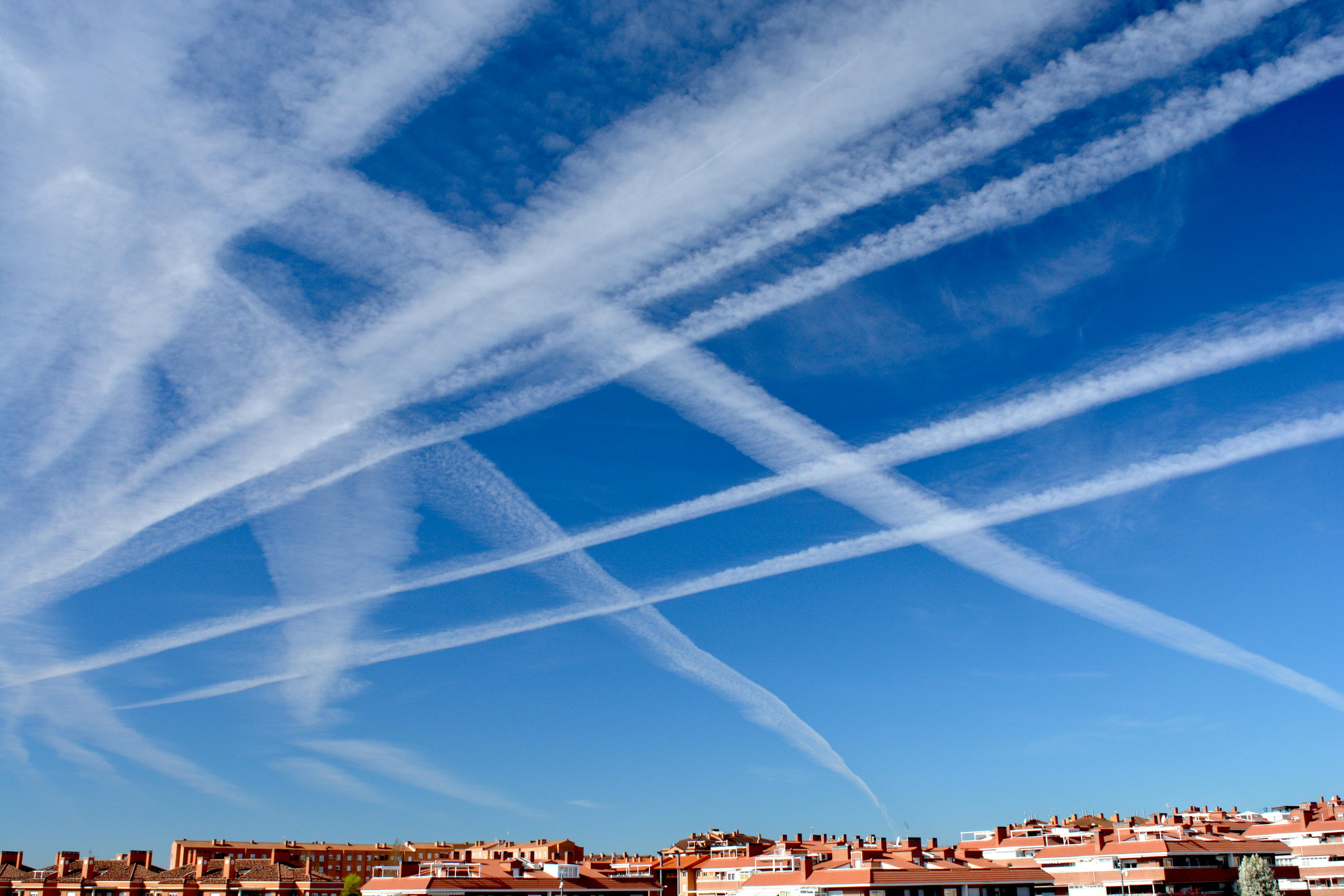
Plane to see
Why is the monitoring of contrails from planes causing controversy?


If you look up at a clear blue sky you’ll surely already have seen white stripes criss crossing the horizon. Contrails, as these stripes are called, are caused by jet engine exhaust. They are worse for the climate than aviation’s CO2 emissions. Cutting contrails is the quickest, cheapest path for the airline industry to reduce its climate impact. Yet some legacy airlines and other players in the industry are lobbying hard to avoid this from happening.
Contrails are formed when particles emitted by planes combine with water in ice cold and humid parts of the atmosphere. These little ice crystals are the stripes we see when we look up. Some contrails form clouds which can last in the atmosphere for up to a few hours. When the sun goes down, they trap heat coming from earth, warming the planet. If it were just one flight, the impact of contrail-induced heating would be insignificant. But as there are more than 20,000 daily flights crossing over Europe alone, contrails clouds become semi permanent, leading to very significant warming.
This phenomenon was described in a landmark IPCC report published in 1999 – a quarter of a century ago. Since then, regulators across the world have done nothing to address contrail pollution. For that, we can thank the aviation industry. Whenever contrails were brought up in the last 25 years, aviation lobbyists would question the science and point to uncertainty. It was too early and uncertain to take action, they claimed. Unsurprisingly, the aviation industry did very little to advance scientific research.
Their most recent delay tactic has been to oppose the mere monitoring of these contrails. As part of a major reform of the EU’s carbon pricing scheme for aviation, lawmakers decided it was time to start monitoring contrail pollution. That scheme will be put in place by 2025. By 2028 the EU must introduce measures to reduce contrail pollution.
But legacy airlines and their political friends are pushing back. The powerful airline lobby IATA and its membership of legacy carriers are opposed to the EU monitoring contrails on long distance flights – which they mostly operate and which cause most of the contrails. Others claim fitting humidity sensors on their jets or reporting some data would be ruinously expensive. We have had 25 years of fear, uncertainty and doubt. There is no time to waste before we start monitoring these emissions.
Fortunately real scientists have held the fort. Thanks to them, we have greatly advanced our understanding of how to predict, model and avoid contrails. Three things stand out:
First, the warming through contrails is at least as bad as that of aviation’s total CO2 emissions. But it’s much more localised. 80% of that warming is caused by around 2% of flights, with significant contrail warming happening due to long-distance flights to the US and Asia. Whilst contrails have a slightly cooling effect during the day, their warming impact at night is much stronger.
Second, contrails can be fairly easily avoided by flying over or under so-called ice supersaturated regions, where it’s both very cold and very humid. Contrail prediction models can be combined with flight planning tools to reroute flights with negligible extra costs and almost no additional flight time. Companies like Satavia and Flight Keys are pioneers in this field. The data required to achieve that can be obtained from airlines, weather services or reliable models.
Focusing on avoiding the most warming contrails, known as “big hits”, results in a net climate benefit, as the reduction in contrail warming more than compensates for possible extra fuel emissions, estimated at less than 1%.
Thanks to innovators, research and trials, supported by a minority of airlines, our knowledge of contrails and avoidance techniques are improving by the day. A solid monitoring framework means more data to further improve scientific knowledge and mitigation pathways. That’s why opposing the monitoring means throwing a spanner in the works of this promising climate solution.
Airlines now face a choice. Contrail avoidance is the cheapest, fastest way for airlines to cut their climate impact with a carbon abatement cost of less than €10/tonne – compared to €500/tonne for SAF. This is the lowest hanging fruit of the aviation climate challenge and perhaps across the economy as a whole. It’s a blessing for an industry that has a bad reputation and has done too little to reduce its climate impact in the last few decades.
So you would expect airline executives to embrace this as an opportunity – not oppose it so shortsightedly. Supporting contrail avoidance could help improve their reputation on climate. But that will require a change of mindset from the one deployed in the last 25 years.
First published on Euractiv



